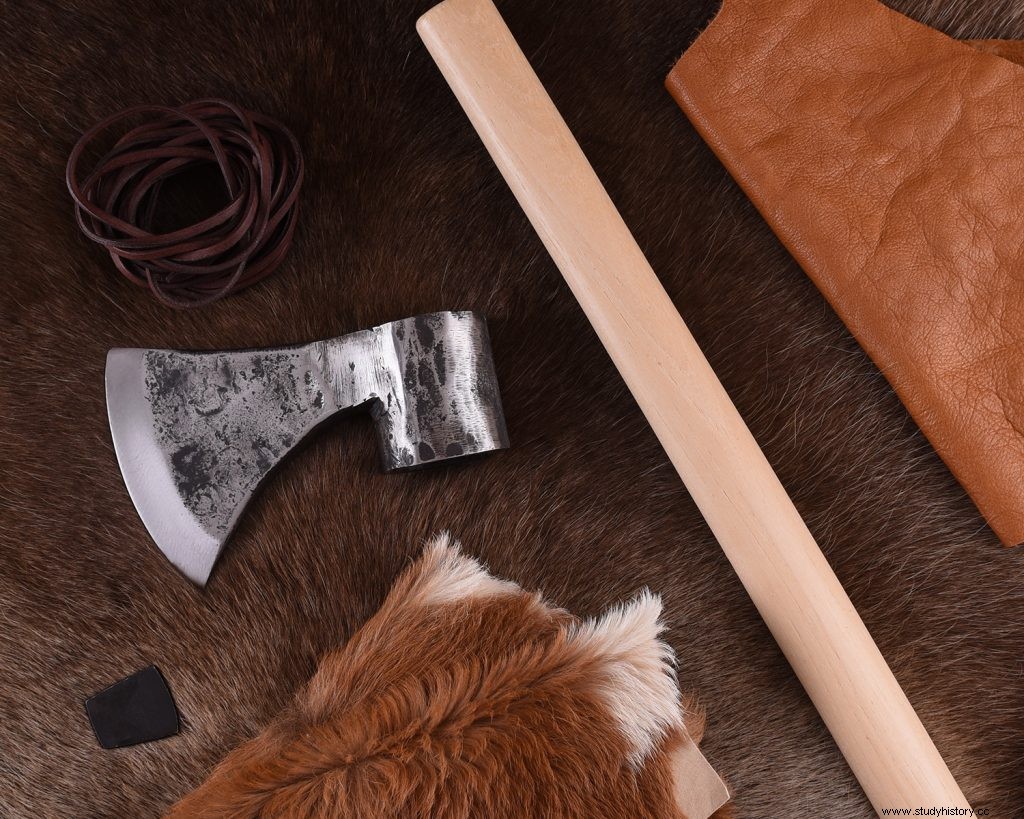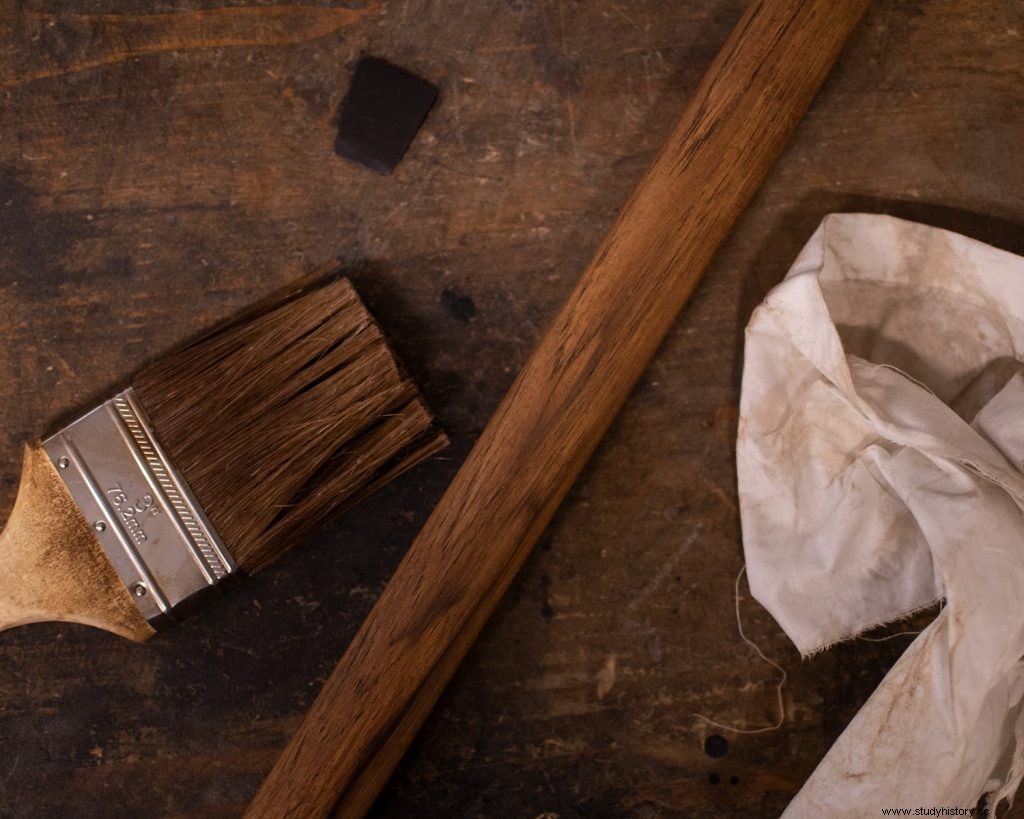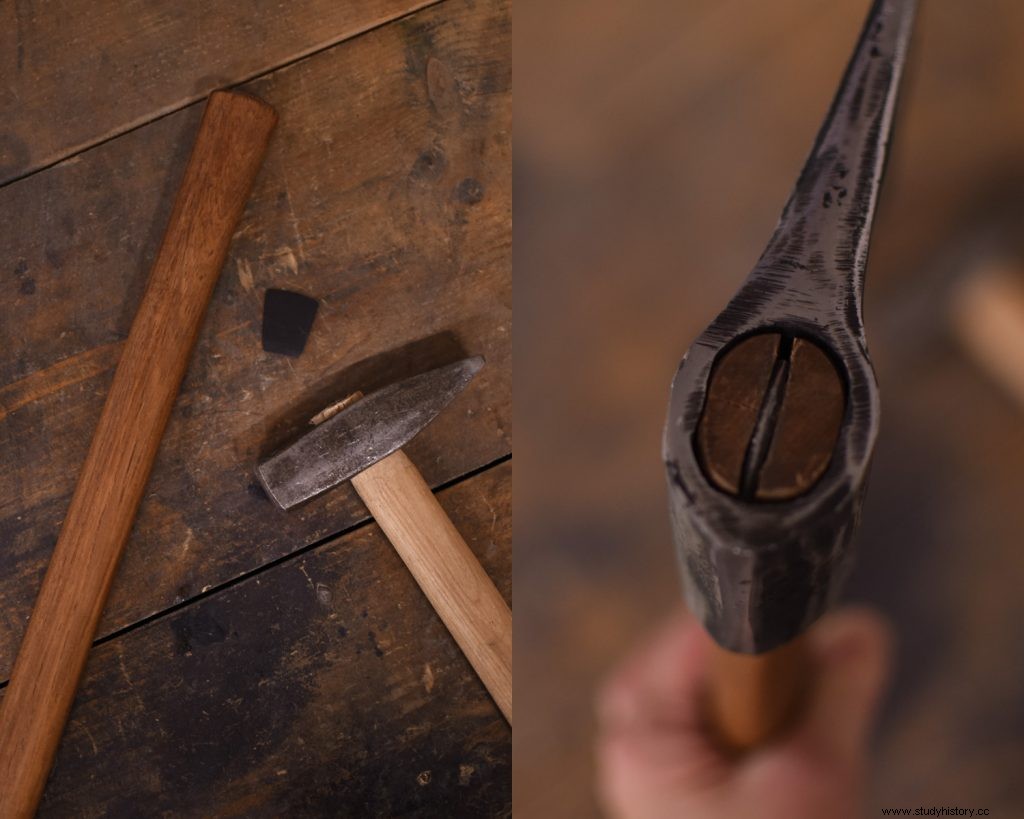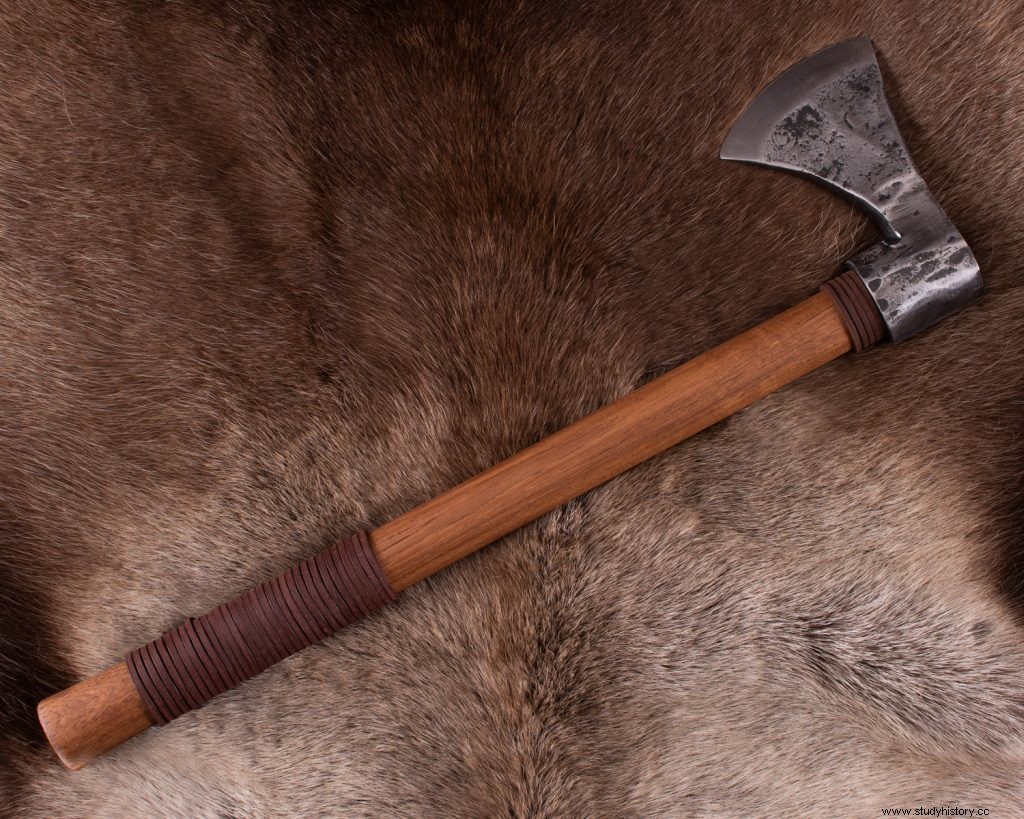The ax is not only a practical tool for splitting wood or for other striking and cutting work - with a little help, it can also look really good and thus become your very own favorite tool, round off your medieval outfit or decorate your camp beautify.
You need this
1x ax blade
1x shaft
1x ax wedge
A little color
Possibly small nails
Possibly leather remnants
Possibly fur remnants
Tools
Glue
Scissors
mallet
Soldering Iron
saw
How to make an ax
Step 1

Select ax blade and shaft. If necessary, shorten the shaft and bring it to the desired length.
Step 2

Treat the shaft with the desired color (glaze, oil, wax). This has the advantage that the style of the ax looks a bit more rustic and the wood is happy too 😉. If you like, you can also lightly flame the shaft or burn in decorative elements with a soldering iron.
Step 3

After the paint has dried, the ax blade can be attached to the shaft with the ax wedge. To do this, the ax blade is pushed over the shaft and the wedge is driven into the wood from above. Now the ax head is firmly and securely in place.
Step 4

In this step you can decide whether you want to equip your ax with a leather or fur handle. But maybe a few simple straps are enough for purely decorative purposes. There are no limits to your imagination.
We have decided on a simple Viking axe. Are you interested in imitating our ax? Then you can find the articles here:
Ax Blade
https://www.battlemerchant.com/hand-forged-viking-axe-head-ca.-15-cm
Shank
https://www.battlemerchant.com/axe-shaft-made-of-hickory-wood-approx.-56-cm-long
Wedge
https://www.battlemerchant.com/forged-axe-wedge-for-handle-mounting-various-sizes
Leather straps
https://www.battlemerchant.com/four-cornered-belts-brown-120-cm
Battle-Merchant wishes you a lot of fun designing YOUR axe!
